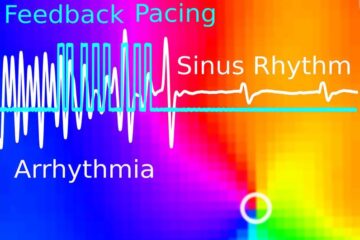Physics for taxi drivers, good radiation, and a lucky break for astronomers

As the UK prepares to celebrate Einstein Year in 2005, a physicist from Bristol University is looking for stories that can be used to tell taxi drivers what physics is all about. Sir Michael Berry, whose own father was a London cabbie, thought of the idea after failing to give a taxi driver a clear explanation of what it is that physicists actually do. Berry realized that physicists need a stock of good and convincing stories that show how physics affects people’s lives. Looking back, he now wishes that he had told the driver how physics has democratized music, by creating the laser, which allows music to be played on a CD almost anywhere. Berry also wishes that he had said how physics has led to GPS navigation devices – the first consumer product to take advantage of Einstein’s general theory of relativity. The best stories will be published in a future issue of Physics World.
Radiation – how much is good for you?
Anti-nuclear activists have always argued that even a tiny dose of radiation is bad for the human body. But according to a radiation biologist at Washington State University in the US, that view may be wrong. Antone (Tony) Brooks, who is involved in a low-dose research programme sponsored by the US government, says that the impact of small amounts of radiation is much more complicated than previously suspected. They have a cocktail-like mixture of beneficial and harmful effects that can, on balance, be harmless below a certain threshold. As Robert P Crease explains, this change of view could have huge social and economic consequences.
“Lucky Break” makes ground-based telescopes as good as Hubble
Cambridge astronomers have breathed new life into a technique that they claim allows ground-based telescopes to generate images as good as those from the Hubble Space Telescope. The technique, known as “Lucking Imaging”, counteracts the effect of turbulence in the Earth’s atmosphere and could be ideal for taking images over a wide field of view. According to Craig Mackay, Lucky Imaging could be used to study dark matter – the non-luminous substance that is believed to make up most of the matter in the universe. Until now it has only been possible to use the technique to take images of relatively bright objects such as Mars.
Also in this issue:
o Decision time for ITER fusion project
o Ink-jet firms join forces to study drops
o Drama, tragedy and gravitational waves
o 20 years of quasicrystals
o Superconducting quantum bits
o Christmas books — from Copernicus to Champagne
o 2004 Quiz of the Year
Media Contact
All latest news from the category: Physics and Astronomy
This area deals with the fundamental laws and building blocks of nature and how they interact, the properties and the behavior of matter, and research into space and time and their structures.
innovations-report provides in-depth reports and articles on subjects such as astrophysics, laser technologies, nuclear, quantum, particle and solid-state physics, nanotechnologies, planetary research and findings (Mars, Venus) and developments related to the Hubble Telescope.
Newest articles

Wildfire danger to increase due to climate change
WSL Institute for Snow and Avalanche Research (SLF) researchers expect an elevated wildfire danger in the Alpine Foreland from 2040 onwards due to changing meteorological conditions. The danger currently remains…

Advanced Brain Science Without Coding Expertise
Researchers at Helmholtz Munich and the LMU University Hospital Munich introduce DELiVR, offering a new AI-based approach to the complex task of brain cell mapping. The deep learning tool democratizes…

Gentle defibrillation for the heart
Using light pulses as a model for electrical defibrillation, Göttingen scientists developed a method to assess and modulate the heart function. The research team from the Max Planck Institute for…





















